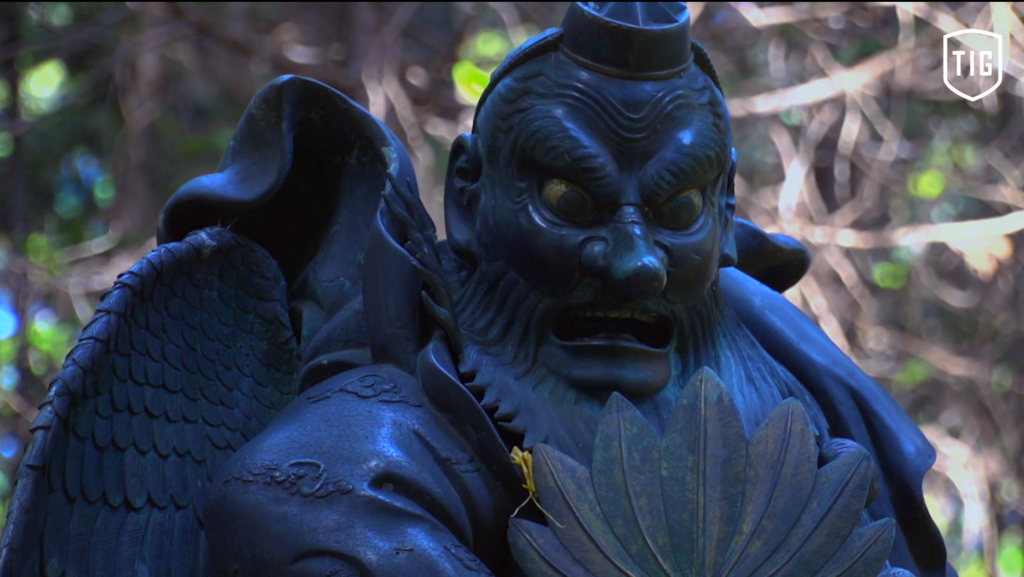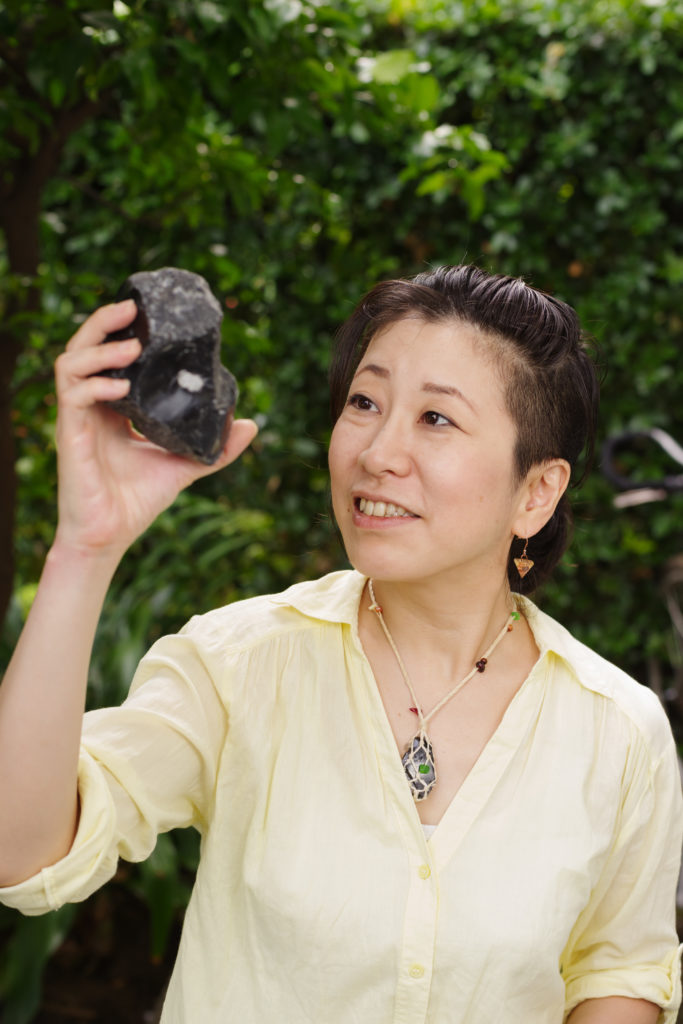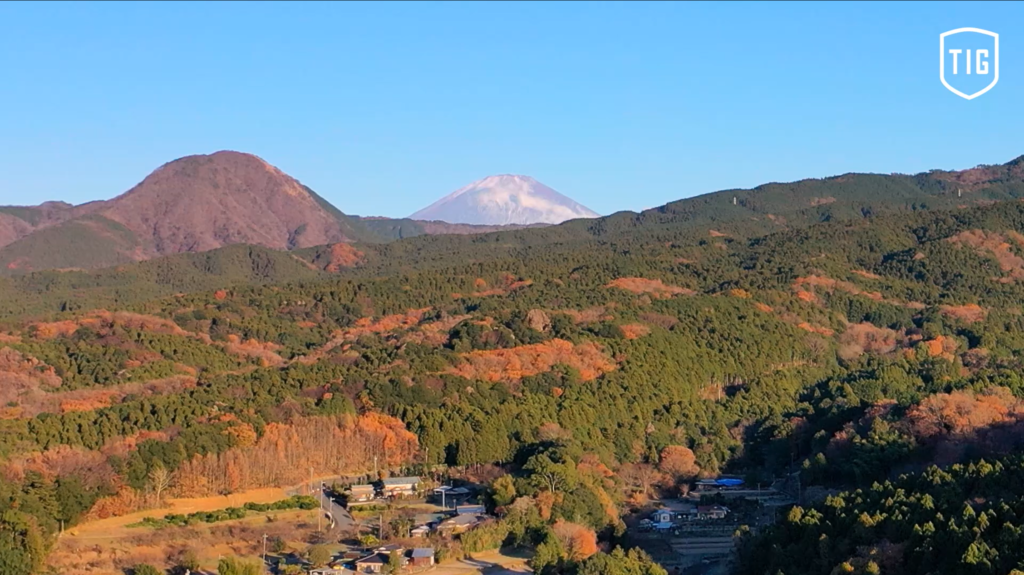Zekkei × DJ Yogurt | Daiyuzan SAIJOJI
11月24日、まだ紅葉の残る神奈川県南足柄市の大雄山最乗寺にて、DJ Yogurtさんを迎え撮影を行ってきました。 最乗寺は関東の霊場として知られ、開創より600年以上の歴史を持ち、鬱蒼としげる杉の老木に囲まれた、大変立派なお寺です。 30余りの山門やお堂・宝塔などが、130町歩という広大な山林を境内として立ち並んでおり、一帯には静謐かつパワフルな気が漲っている様です。 (約129ヘクタール:1ヘクタールは、100m×100m) 日本らしい美しい秋の風景の中で撮影をしたいと探していたところ、来場者の邪魔にならなければどこで撮影しても構わないとご快諾いただきました。 折角なので、ここからが最乗寺の守護である道了大薩埵の浄域だよという「結界門」を潜ったところにブースを設置し、DJ Yogurtさんにプレイを披露して頂きました。
On November 24th, we took a movie with DJ Yogurt at Daiyuzan Saijoji in Minamiashigara City, Kanagawa Prefecture, where the autumn leaves still remain. Saijoji is known as a sacred place in the Kanto region, has a history of more than 600 years since its foundation, and is a very splendid temple surrounded by dense old cedar trees. About 30 mountain gates, temples and treasure towers are lined up in the vast forest of 130 chobu(Approximately 129 hectares), and the area seems to be quiet and powerful. We were looking for a shoot in the beautiful autumn scenery that is typical of Japan, and he kindly agreed that I could shoot anywhere as long as it didn’t get in the way of the visitors. Since it is a good time, we set up a booth under the “barrier gate” that says that this is the purification area of Daiyuzan Saijoji, which is the guardian of Saijoji Temple, and DJ Yogurt showed us the play.

ライターの草刈朋子さんに、後日大雄山最乗寺へご訪問いただき、最乗寺の方へのインタビューを踏まえて、大雄山最乗寺と山岳信仰についてレポートを書いていただきました。
Writer Tomoko Kusakari visited Daiyuzan Saijoji later in the day and wrote a report on Daiyuzan Saijoji Temple and mountain worship based on her interview with Saijoji Temple.
南足柄市にある大雄山最乗寺は、道元を開祖とする曹洞宗の禅寺の中でも永平寺、總持寺に次ぐ名刹として知られている。開山は室町時代の1394年と大変古く、藤原氏の流れを組む了庵慧明という高僧が1羽の大鷲に導かれてこの地に寺を建立したのが始まりとされている。
Daiyuzan Saijoji, located in Minami Ashigara City, is known as one of the most famous Zen temples of the Soto sect of Zen Buddhism after Eiheiji Temple and Sojiji Temple, whose founder was Dogen. The temple was founded in 1394 during the Muromachi period (1334-1573), when a high priest named Ryoan Emyo, a member of the Fujiwara clan, was led by a large eagle to build a temple here.
最乗寺は一言で表すと、曹洞宗の修行道場だ。寺は樹齢500年以上の杉の巨木が何本も立ち並ぶ山中にある。神聖でパワフルな山の気がみなぎる環境は、修行に集中するにはまさに好適地だといえる。しかし、ここをひときわ特徴づけているのは、今回の動画でも見られるように、広大な境内の所々に立つ天狗の像だろう。
In a nutshell, Saijoji is a training *Dojo for the Soto sect of Buddhism. The temple is located in the middle of a mountain with many giant cedar trees over 500 years old. The sacred and powerful atmosphere of the mountain makes it a perfect place to concentrate on ascetic practices. However, what makes this place stand out is the statues of Tengu that stand everywhere in the vast precincts, as seen in this video.
*Dojo : A training hall
*Tengu : A long-nosed goblin
ターンテーブルが置かれた結界門や祈祷所の御真殿、奥の院の石段の下には、大天狗と小天狗が大きな目を見開き、眼光鋭くそこを通る者を睨み付けている。御真殿の脇には各地から奉納された天狗の履き物である高下駄がまことしやかに置かれ、屋根の寺紋には天狗の葉うちわが取り付けられている。つまり、ここは天狗信仰の寺でもあるのだ。
At the boundary gate where the turntable is placed, at the Goshinden prayer hall, and at the bottom of the stone steps of the inner sanctuary, there are large and small Tengu with their eyes wide open, glaring sharply at those who pass by. On the side of the main hall, there are high *geta, the shoes of the Tengu, dedicated from all over the country, and a Tengu leaf fan is attached to the temple crest on the roof. In other words, this is also a temple of the Tengu faith.
*Geta : It’s a form of traditional Japanese footwear resembling flip-flops.
天狗は赤ら顔に高鼻の山伏の姿をした妖怪で、神通力を持ち自由に空を飛び回る存在として有名だが、もともとは中国で災いを意味する流星を意味するものだったらしい。それが仏教とともに日本に渡り、先述した天狗になったのは室町時代のこと。これは、山伏によって山岳信仰が一般化した時代にあたる。
Tengu is a red-faced, high-nosed mountain priest who is famous for his divine power and ability to fly freely in the sky, but it is said to have originally meant “meteor” in Chinese, which means disaster. It was in the Muromachi period (1336-1573) that they came to Japan along with Buddhism and became the aforementioned Tengu. This was the period when mountain worship was popularized by mountain priests.
この頃の山伏は山中で厳しい修行を行うだけではなく、里に降りて人々に仏教を教え、講を組織し道先案内人の先達としても活躍していた。一方で、山伏は薬草や医療の知識にも長けており、山間部の暮らしに必要とされる存在でもあった。天狗が*山伏の姿をしているのは、決して偶然ではないのだ。
*山伏:山野に住んで修行する僧
In those days, mountain priests not only practiced hard asceticism in the mountains, but also went down to the villages to teach Buddhism to the people, organized lectures, and acted as guides. On the other hand, *yamabushi were also skilled in medicinal herbs and medicine, and were needed in the lives of people living in the mountains. It is no coincidence that tengu take the form of mountain priests.
*Yamabushi : A monk who lives and practices in the mountains and fields.
大雄山最乗寺の天狗は、実在するある人物がモデルとされている。その人物とは、伊勢原出身の道了という山伏だ。道了は各地の山中で厳しい修行を積んだ修験者であり、当時石川県にあった総持寺の住職をしていた了庵慧明に弟子入りし、滋賀県の三井寺で多くの弟子を育てた人物だと伝えられている。
The Tengu of Daiyuzan Saijoji is said to be modeled after a real person. That person is a mountain priest named Doryo from Isehara. It is said that he was a mountain ascetic who practiced hard asceticism in the mountains of various places. He became a disciple of Ryoan Emyo, who was the abbot of Sojiji Temple in Ishikawa Prefecture at that time, and trained many disciples at Mitsui Temple in Shiga Prefecture.
最乗寺に伝わる天狗伝説は、道了の武勇伝に事欠かない。
まず、師匠である了庵が足柄の地に最乗寺を建てることを聞きつけると、滋賀から山を超え、野を走りたった1日で尊敬する和尚のもとに馳せ参じてしまう。さらには、最乗寺の建立時に怪力を発揮し、巨岩を砕き大木を切り倒す大土木工事を一人で成し遂げる。そして、了庵和尚が75歳でなくなると、「自分の役目は終わった。以後山中にあって大雄山を護り多くの人々を利済する」と言い残し、天狗の姿になって奥山へ姿を消すのだ。
このように超人的に語られる道了は、おそらくは八面六臂の活躍をしたパワフルな人物だったのだろう。天狗になった道了は大雄山最乗寺の守護神として絶大な人気を誇る神になっていく。
There is no shortage of legends of Doryo’s heroism in the Tengu legend that has been passed down in Saijoji Temple.
First of all, when he heard that his master Ryoan was going to build Saijoji Temple in Ashigara, he rushed from Shiga to the respected monk in just one day, crossing mountains and fields. In addition, he demonstrated his monstrous strength during the construction of Saijoji Temple and accomplished the great civil engineering work by himself, crushing huge rocks and cutting down large trees. When Monk Ryoan passed away at the age of 75, he said, “My role is over. From now on, I will stay in the mountains to protect Mt. Daiyu and benefit many people,” he said, and disappeared into the mountains as a Tengu.
Thus, the superhumanly described Doryo was probably a powerful person who was active in all aspects of his life. After becoming a Tengu, Doryo became an immensely popular deity as the guardian deity of Daiyuzan Saijoji Temple.
しかし、ちょっと待って欲しい。冒頭にも書いたように、ここは曹洞宗の修行寺で、開祖は了庵慧明であり、御本尊はお釈迦様だ。天狗となった山伏の道了が神として祀られているのは、奇妙な話ではないだろうか。
しかし、それをアリとしたのは寺と民衆の両方のようである。
明治時代に神仏分離令が発令されるまで、日本では土着の神道と仏教が混ざり合う神仏習合の時代が1000年以上続いていた。神と仏を区別しないという独特の精神のもと、最乗寺は現世御利益を体現する大権現として天狗の道了を寺の守護に据えたのだし、その御利益にあやかるために、神奈川や東京を中心に遠くは愛知、広島から多くの講中がここを目指したのだから。
But wait a minute. As I mentioned at the beginning of this article, this is a training temple of the Soto sect of Buddhism, the founder of which is Ryouan Emyo, and the principal deity is Shakyamuni. Isn’t it strange that Doryou, a mountain priest who became a Tengu, is enshrined as a deity?
However, it seems that it was both the temples and the people who allowed this to happen.
For more than 1,000 years, Japan had been in an era of Shinto-Buddhist syncretism, where indigenous Shintoism and Buddhism were mixed together, until the separation of Shintoism and Buddhism was enacted in the Meiji era. Based on the unique spirit of not distinguishing between God and Buddha, Saikyoji Temple set up the Tengu Dogen Doryo as the guardian of the temple as a great deity that embodies the benefits of this world, and many Buddhist priests from Kanagawa, Tokyo, and as far away as Aichi and Hiroshima went to this temple to pray for its benefits.
ちなみに、最乗寺では、今でも寺の配役リストの一番手に道了の名前を位置付けている。それは、道了が決して亡くなった人ではないことを表しているのだという。最乗寺の1番手として永久欠番化された道了は、今も僧侶たちの心の中で生き続けているのだ。
Incidentally, Saikyo-ji still places the name of Doryo at the top of the temple’s cast list. This is said to indicate that he is not a deceased person. As the first person in Saijoji, his name has been permanently removed from the list, but he is still alive in the hearts of the monks.
大雄山最乗寺は、天狗になった道了が見守る聖地である。道了天狗は、結界門の中という聖域で行われた前代未聞のDJプレイをどのように聞いただろうか。「神も仏も一緒でいい」と言ってくれるおおらかな神ならば、きっとその場で踊り、楽しんでくれたのではないだろうか。
Daiyuzan Saijoji Temple is a sacred place watched over by the Tengu, the Doryou Tengu. I wonder how the Doryo Tengu listened to the unprecedented DJ performance that took place in the sanctuary inside the boundary gate. If he is a generous god who says, “God and Buddha can be together,” I’m sure he would have danced and enjoyed the performance.
*参考資料:瓜生生『よくわかる山岳信仰』(角川ソフィア文庫、2020年11月21日)

草刈朋子(くさかりともこ)
縄文探求ユニット「縄と矢じり」の文章担当。北海道出身。コピーライター、雑誌・書籍編集を経てフリーの編集・ライターとして独立。2009年よりNPO法人jomonismに参加し、縄文関連イベントの企画・制作に携わる他、縄文をテーマに執筆。フォトグラファーの廣川慶明とともに「縄と矢じり」を結成し、全国の遺跡や考古館を旅しながら各地の縄文のカタチ、環境から読み解ける先史時代の価値観を探求中。
In charge of writing for the Jomon exploration unit “Nawa To Yajiri”.Born in Hokkaido. After working as a copywriter and editing magazines and books, became independent as a freelance editor and writer. Since 2009, she has participated in the NPO jomonism, involved in the planning and production of Jomon-related events, and wrote on the theme of Jomon. Formed “Nawa To Yajiri” with photographer Yoshiaki Hirokawa, and while visiting archaeological sites and archaeological sites nationwide, they are exploring the shapes of Jomon and prehistoric values that can be understood from the environment.

山深い中に現れる日本らしい秋の風景、老杉の合間をぬい結界門を潜ってDJ Yogurtさんが登場するオープニングのドローン映像、30余りの歴史的な建造物や深い自然とテクノビートが奏でる美しいコラボレーションを、みなさまぜひお楽しみください!
A Japanese-style autumn landscape in the deep mountains, an opening drone video of DJ Yogurt appearing through the barrier gate between old cedars, a beautiful collaboration of more than 30 historic buildings and deep nature and techno beats. Please enjoy it!
THAT IS GOOD 編集部 中村
THAT IS GOOD editorial department Nakamura